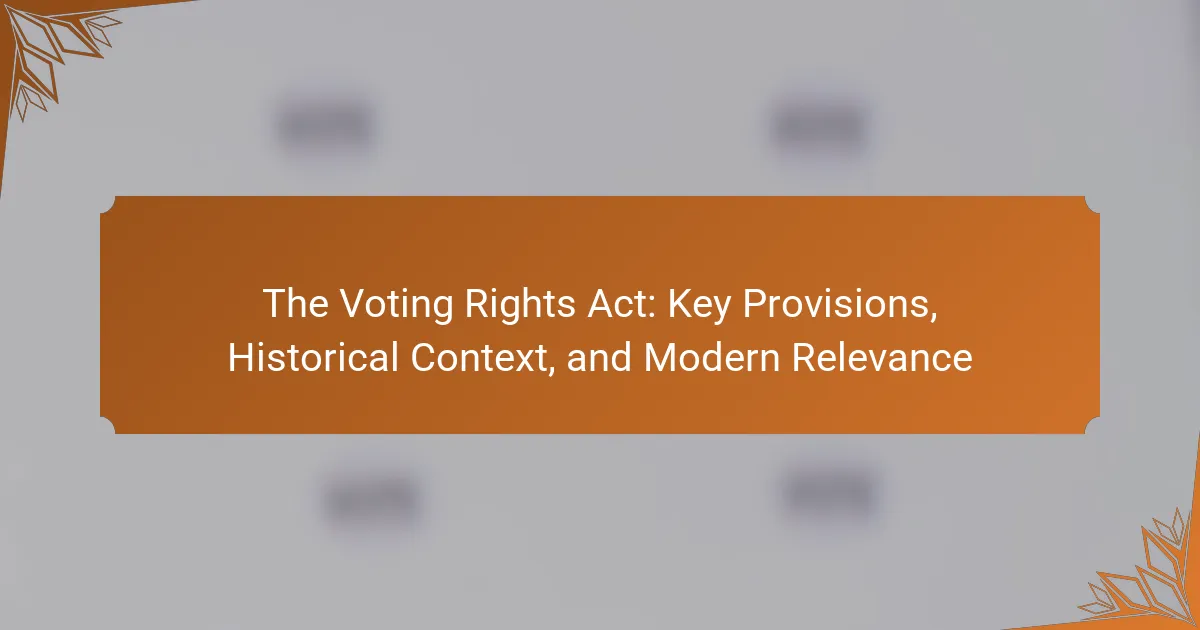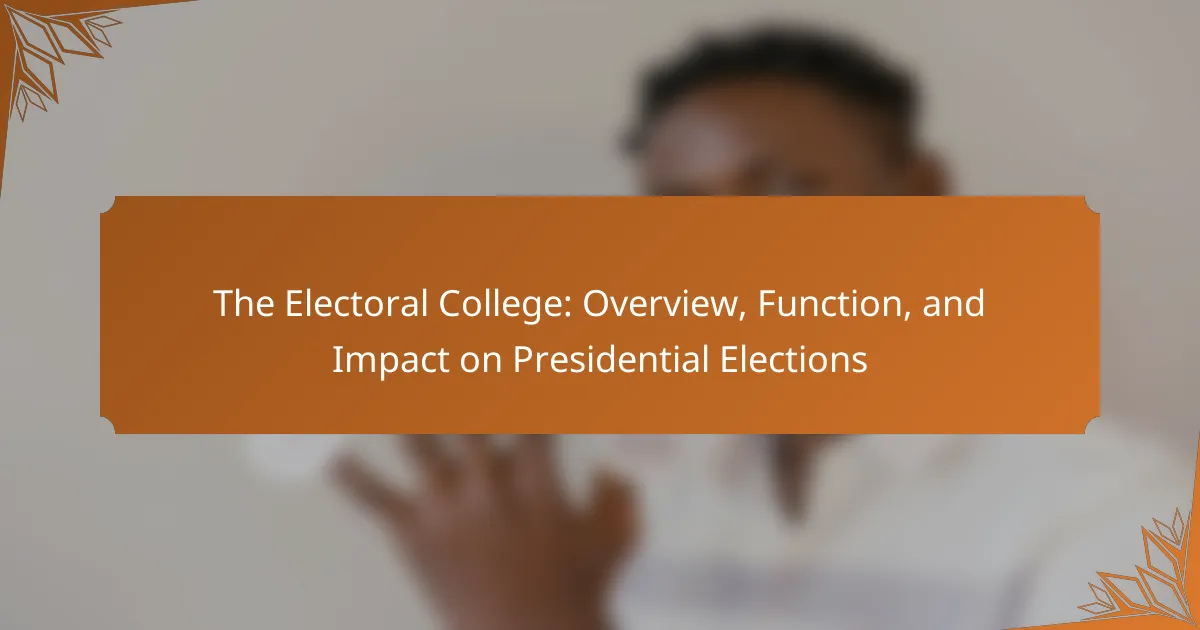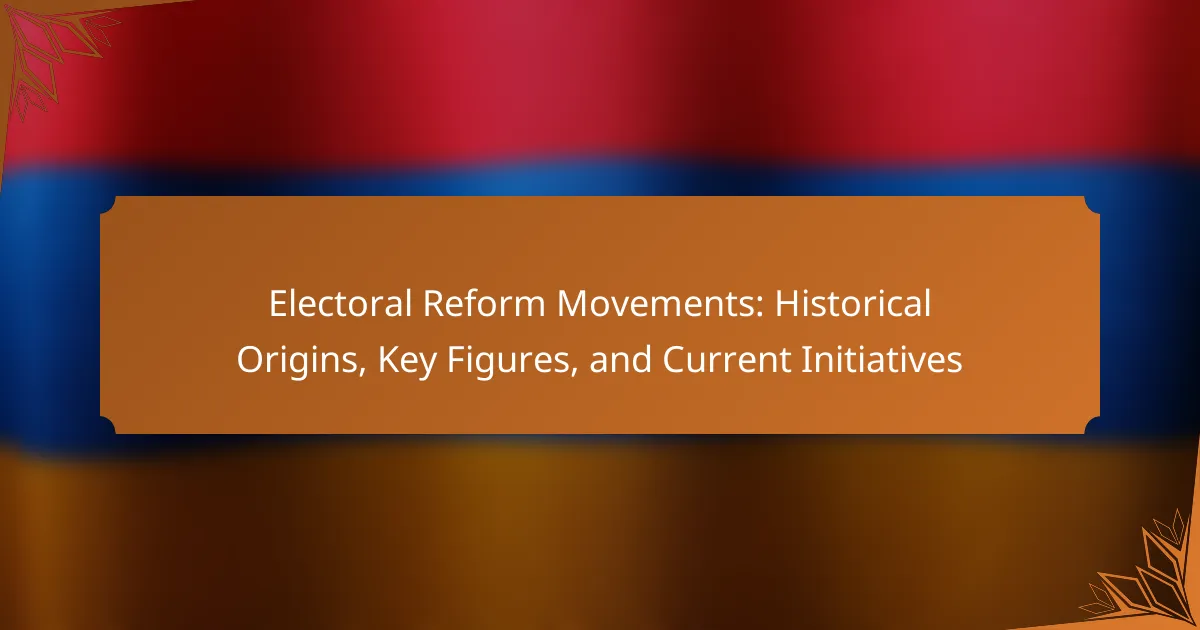The Voting Rights Act is a significant federal legislation enacted on August 6, 1965, aimed at eliminating racial discrimination in voting practices in the United States. It prohibits discriminatory voting practices, such as literacy tests, and requires jurisdictions with a history of racial discrimination to obtain federal approval before altering voting laws. The Act has been amended multiple times to enhance protections for marginalized groups and has played a crucial role in increasing voter registration among African Americans. The historical context includes its roots in the Civil Rights Movement and key events like the Selma to Montgomery marches. The Act remains relevant today as it continues to serve as a legal framework against voter suppression, despite challenges from recent Supreme Court decisions that have weakened certain provisions.
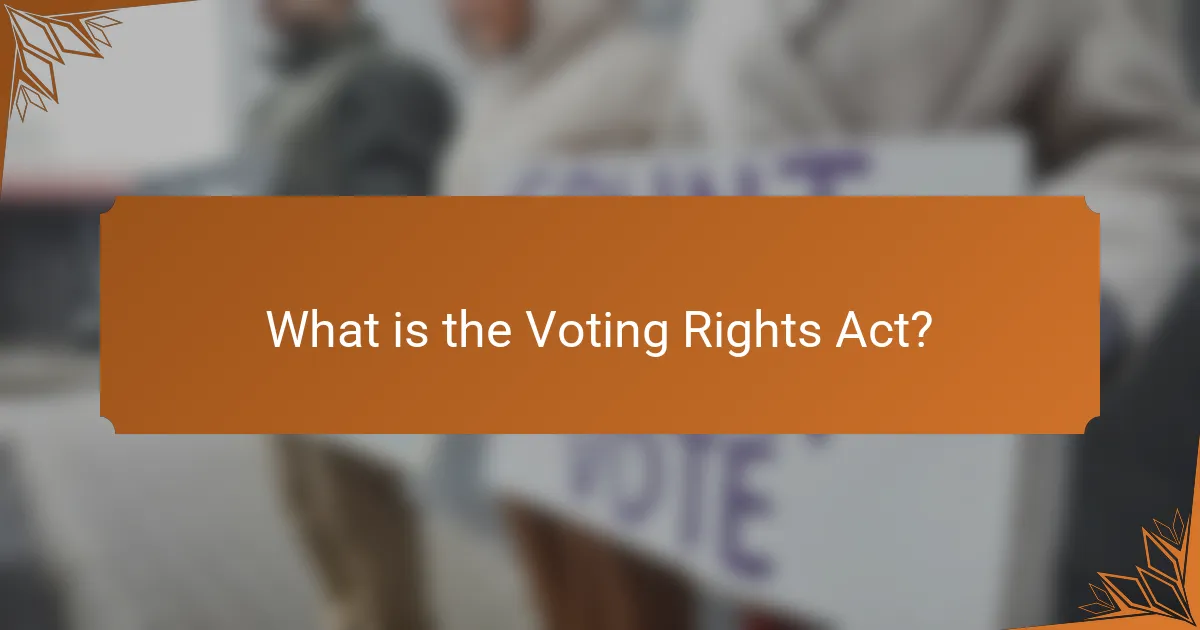
What is the Voting Rights Act?
The Voting Rights Act is a landmark piece of federal legislation in the United States. It was enacted on August 6, 1965. The Act aimed to eliminate racial discrimination in voting. It prohibits voting practices that disenfranchise minority voters. Key provisions include the prohibition of literacy tests and the requirement for jurisdictions with significant racial discrimination to obtain federal approval before changing voting laws. The Act has been amended several times to expand protections. It played a crucial role in increasing voter registration among African Americans. The Voting Rights Act is considered essential for safeguarding the right to vote.
How did the Voting Rights Act come into existence?
The Voting Rights Act was enacted in 1965 to eliminate racial discrimination in voting. It emerged from the civil rights movement, which highlighted the systemic disenfranchisement of African Americans. Key events, such as the Selma to Montgomery marches, drew national attention to these injustices. President Lyndon B. Johnson played a crucial role in advocating for the legislation. He introduced the Voting Rights Act to Congress after the violence in Selma. The Act aimed to enforce the voting rights guaranteed by the 14th and 15th Amendments. It prohibited discriminatory practices like literacy tests and provided federal oversight of voter registration in areas with a history of discrimination. The legislation was signed into law on August 6, 1965, marking a significant milestone in the fight for civil rights in the United States.
What historical events led to the creation of the Voting Rights Act?
The Voting Rights Act was created in response to systemic racial discrimination in voting. Key events included the Jim Crow laws, which enforced racial segregation and disenfranchised African Americans in the South. The 1964 Civil Rights Act aimed to combat discrimination but did not fully address voting rights. The Selma to Montgomery marches in 1965 highlighted the struggle for voting rights. These marches were met with violent opposition, notably on “Bloody Sunday.” Media coverage of the violence garnered national attention and outrage. This public pressure led to the introduction of the Voting Rights Act. The Act was signed into law by President Lyndon B. Johnson on August 6, 1965.
Who were the key figures involved in the passage of the Voting Rights Act?
Key figures involved in the passage of the Voting Rights Act include President Lyndon B. Johnson, Martin Luther King Jr., and Congressman John Lewis. President Johnson played a crucial role in advocating for the legislation. He pushed for the Act after witnessing the violence against civil rights activists. Martin Luther King Jr. organized protests that highlighted the need for voting rights. Congressman John Lewis, a leader in the Student Nonviolent Coordinating Committee, was instrumental in the Selma to Montgomery marches. These events drew national attention to voting discrimination. Their collective efforts contributed significantly to the Act’s passage in 1965.
What are the key provisions of the Voting Rights Act?
The Voting Rights Act includes several key provisions aimed at eliminating racial discrimination in voting. It prohibits voting discrimination based on race, color, or membership in a minority language group. The Act also requires jurisdictions with significant racial discrimination histories to obtain federal approval before changing voting laws or practices. It established federal oversight of voter registration and elections in these jurisdictions. Additionally, it provides for federal examiners and observers to monitor elections in areas with a history of discrimination. The Act’s provisions were initially set for five years but have been reauthorized several times, most recently in 2006. These measures have significantly increased voter registration and participation among minority groups since its enactment in 1965.
What specific rights does the Voting Rights Act protect?
The Voting Rights Act protects the right to vote for all citizens, particularly focusing on racial minorities. It prohibits discriminatory voting practices that disenfranchise individuals based on race or color. The Act aims to eliminate barriers such as literacy tests and poll taxes. It also mandates federal oversight of voter registration in areas with a history of discrimination. Additionally, the Act ensures that election procedures are fair and accessible. Key provisions include Section 2, which prohibits voting discrimination, and Section 5, requiring jurisdictions with significant racial discrimination histories to receive federal approval for changes to voting laws. The Act has been pivotal in increasing voter registration and participation among minorities.
How does the Voting Rights Act address discriminatory practices?
The Voting Rights Act addresses discriminatory practices by prohibiting racial discrimination in voting. It specifically outlaws practices that disenfranchise minority voters. Section 2 of the Act prohibits voting laws that result in discrimination based on race or color. It provides a legal framework for individuals to challenge discriminatory practices in court. The Act also requires jurisdictions with a history of discrimination to obtain federal approval before changing voting laws. This preclearance provision aimed to prevent new discriminatory practices from being implemented. The Act has been crucial in increasing voter registration and participation among minority groups. For example, after its passage in 1965, voter registration among African Americans in the South significantly increased.
What impact did the Voting Rights Act have on American society?
The Voting Rights Act significantly expanded voting access for African Americans and other minority groups in the United States. It prohibited racial discrimination in voting practices. The Act led to a dramatic increase in voter registration among Black citizens. For example, in Mississippi, Black voter registration jumped from 6.7% in 1964 to 59.8% by 1967. The legislation also aimed to eliminate literacy tests and other barriers that disenfranchised voters. It established federal oversight of voter registration in areas with a history of discrimination. The Act has been pivotal in shaping American electoral politics and promoting civil rights. Its passage marked a crucial turning point in the struggle for equality in the U.S.
How did the Voting Rights Act change voter registration processes?
The Voting Rights Act significantly changed voter registration processes by prohibiting discriminatory practices. It aimed to eliminate barriers that prevented African Americans and other minorities from registering to vote. The Act required jurisdictions with a history of discrimination to obtain federal approval before changing voting laws. This provision was known as “preclearance.” Additionally, the Act mandated that states provide voter registration opportunities at the same time as driver’s license applications. It also allowed for federal oversight of voter registration in areas with a history of suppression. These changes resulted in a dramatic increase in registered voters, particularly among African Americans. By 1970, the number of registered Black voters in the South had tripled compared to 1964.
What effects did the Voting Rights Act have on minority voter turnout?
The Voting Rights Act significantly increased minority voter turnout. After its passage in 1965, the Act aimed to eliminate barriers to voting for African Americans and other minorities. It prohibited discriminatory practices, such as literacy tests and poll taxes, that had suppressed minority voting. Studies indicate that African American voter registration rose from 29% in 1964 to over 50% by 1968 in the South. Additionally, the Act led to the federal oversight of voter registration in jurisdictions with a history of discrimination. This federal intervention ensured fair access to voting for minorities. Overall, the Voting Rights Act was instrumental in empowering minority voters and fostering greater electoral participation.
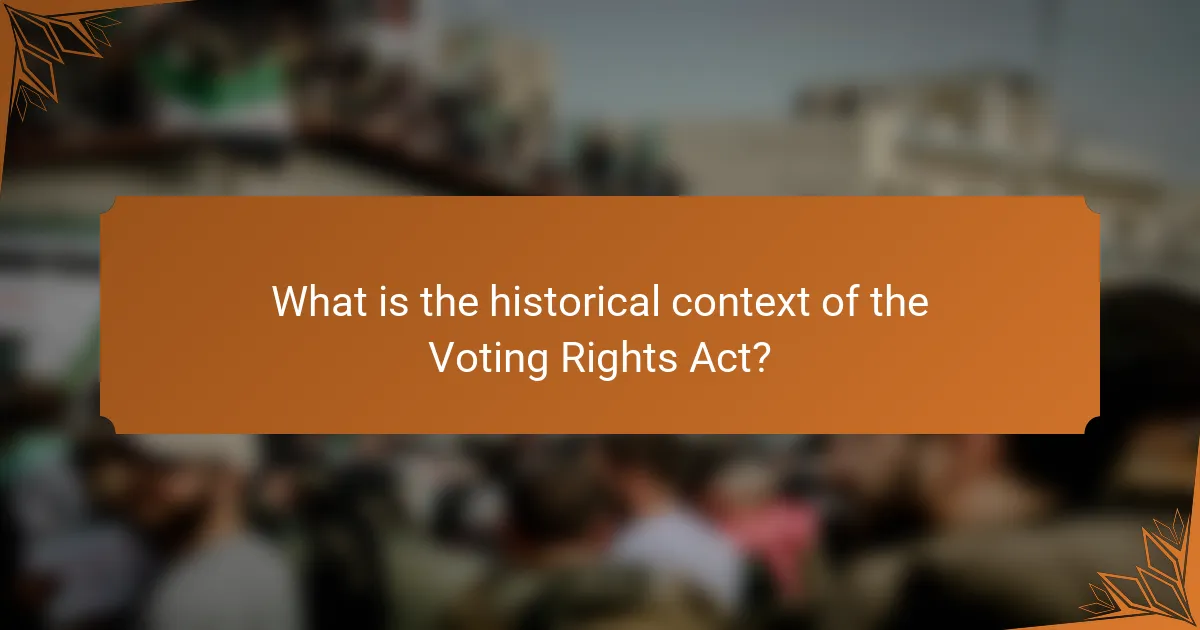
What is the historical context of the Voting Rights Act?
The Voting Rights Act was enacted in 1965 to address racial discrimination in voting. Its historical context includes the Civil Rights Movement, which sought to end segregation and ensure equal rights for African Americans. Prior to the Act, many states employed discriminatory practices like literacy tests and poll taxes to disenfranchise Black voters. The 1964 Civil Rights Act laid the groundwork by prohibiting discrimination in public places. The Voting Rights Act aimed to eliminate barriers to voting and enforce the voting rights guaranteed by the 15th Amendment. Key events leading to its passage included the Selma to Montgomery marches in 1965, which highlighted the struggle for voting rights. The Act has since been amended several times to expand protections and address ongoing discrimination.
What social and political conditions prompted the need for the Voting Rights Act?
The social and political conditions prompting the need for the Voting Rights Act included widespread racial discrimination and disenfranchisement of African Americans. In the 1960s, many Southern states employed tactics like literacy tests and poll taxes to suppress black voter registration. The Civil Rights Movement highlighted these injustices, leading to increased public awareness and activism. Events such as the Selma to Montgomery marches in 1965 showcased the struggle for voting rights. These protests drew national attention to the issue of voter suppression. The federal government recognized the urgent need for legislative action to protect voting rights for all citizens. Consequently, the Voting Rights Act was enacted in 1965 to eliminate barriers to voting based on race.
How did segregation and Jim Crow laws affect voting rights?
Segregation and Jim Crow laws severely restricted voting rights for African Americans. These laws enforced racial discrimination in the Southern United States. Poll taxes, literacy tests, and other barriers were used to disenfranchise Black voters. For example, the Mississippi literacy test was designed to confuse and disqualify Black citizens. Between 1890 and 1908, many Southern states adopted such laws to circumvent the 15th Amendment. Consequently, African American voter registration plummeted. In Louisiana, Black voter registration dropped from 130,000 in 1896 to just 1,342 by 1904. The Voting Rights Act of 1965 aimed to eliminate these discriminatory practices.
What role did civil rights movements play in shaping the Voting Rights Act?
Civil rights movements were crucial in shaping the Voting Rights Act. Activists highlighted systemic racial discrimination in voting. Events like the Selma to Montgomery marches drew national attention. These movements mobilized public support for voting rights. They influenced lawmakers to address racial injustices. The Voting Rights Act of 1965 aimed to eliminate barriers to voting. It outlawed discriminatory practices like literacy tests. The act was a direct response to civil rights activism.
What were the major challenges faced during the implementation of the Voting Rights Act?
The major challenges faced during the implementation of the Voting Rights Act included widespread resistance in Southern states. Many local officials employed discriminatory practices to suppress Black voter registration. Literacy tests and poll taxes were used to disenfranchise Black voters. Additionally, there was significant violence and intimidation against those who tried to vote. Federal enforcement was often met with hostility. The Act’s provisions faced legal challenges in courts. Some states attempted to circumvent the law through gerrymandering. Overall, these challenges hindered the Act’s effectiveness in achieving its goals.
How did states respond to the Voting Rights Act after its passage?
States responded to the Voting Rights Act by implementing various measures to circumvent its provisions. Some states enacted literacy tests and poll taxes, which were designed to disenfranchise African American voters. Others attempted to manipulate voter registration processes to create barriers. For example, Southern states often employed intimidation tactics at polling places. The Act aimed to eliminate these discriminatory practices. However, many states found loopholes to maintain control over voter access. This resistance led to further federal intervention and the need for additional legislation to protect voting rights. The ongoing struggle highlighted the challenges in enforcing the Act’s provisions effectively.
What legal battles arose concerning the Voting Rights Act?
Legal battles concerning the Voting Rights Act include significant Supreme Court cases. One major case is Shelby County v. Holder (2013). This ruling invalidated key provisions of the Act. The Court found that the formula used to determine which jurisdictions required federal approval for changes to voting laws was outdated. Another important case is Brnovich v. Democratic National Committee (2021). This decision upheld Arizona voting laws that were challenged under the Voting Rights Act. These legal battles highlight ongoing debates about voting rights in the United States. They reflect tensions between state and federal authority over elections.
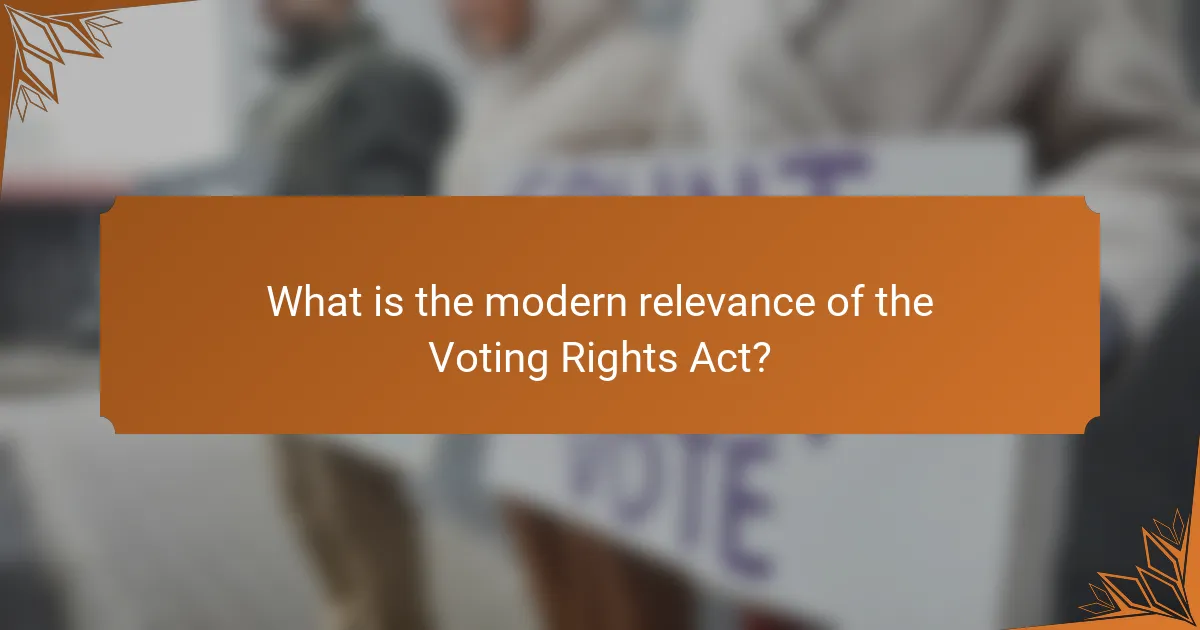
What is the modern relevance of the Voting Rights Act?
The modern relevance of the Voting Rights Act lies in its ongoing protection of voting rights for marginalized groups. It serves as a legal framework to prevent racial discrimination in voting practices. Recent Supreme Court decisions have challenged certain provisions of the Act, raising concerns about voter suppression. For instance, the 2013 Shelby County v. Holder ruling weakened federal oversight of state voting laws. This has led to various states implementing laws that critics argue disproportionately affect minority voters. The Act remains crucial in advocating for equal access to the ballot. Organizations continue to use it to combat discriminatory practices in elections. Thus, the Voting Rights Act is vital for ensuring fair voting processes today.
How is the Voting Rights Act viewed in contemporary society?
The Voting Rights Act is viewed as a crucial piece of legislation in contemporary society. Many see it as a foundation for protecting voting rights. Its provisions are celebrated for combating racial discrimination in voting. However, recent Supreme Court decisions have raised concerns about its effectiveness. Critics argue that these rulings weaken its protections. Supporters emphasize the ongoing need for its principles amid modern voter suppression efforts. Public opinion varies, with some advocating for its restoration and expansion. Historical context shows its significance in the civil rights movement. Overall, the Voting Rights Act remains a vital topic in discussions about democracy and equality.
What ongoing challenges to voting rights exist today?
Ongoing challenges to voting rights today include voter ID laws, gerrymandering, and voter suppression tactics. Voter ID laws can disproportionately affect minority groups and low-income individuals. Gerrymandering manipulates district boundaries to favor one political party over another. Voter suppression tactics include purging voter rolls and limiting access to polling places. According to the Brennan Center for Justice, these practices have increased in recent years. The 2020 election saw numerous states implementing restrictive voting measures. These challenges continue to threaten the fundamental right to vote for many Americans.
How do recent legislative changes impact the Voting Rights Act?
Recent legislative changes have significantly impacted the Voting Rights Act. These changes include state-level laws aimed at voter ID requirements and restrictions on mail-in voting. Such laws can undermine the protections originally established by the Voting Rights Act. For instance, the Supreme Court’s decision in Shelby County v. Holder (2013) weakened federal oversight of state voting laws. This ruling allowed states to implement changes without federal approval, leading to increased voter suppression in some areas. Data from the Brennan Center for Justice indicates that over 400 restrictive voting bills were introduced in 2021 alone. These developments challenge the Act’s effectiveness in ensuring equitable access to the ballot.
What can individuals do to support voting rights today?
Individuals can support voting rights today by advocating for fair voting legislation. They can contact their elected representatives to express support for laws that protect voting access. Participating in local advocacy groups can amplify their voices. Volunteering for organizations focused on voter registration and education is also impactful. Engaging in community discussions raises awareness about voting rights issues. Additionally, individuals can educate themselves and others about the Voting Rights Act and its importance. Supporting efforts to combat voter suppression through social media campaigns can further influence public opinion. Lastly, individuals should ensure they are registered to vote and encourage others to do the same.
What resources are available for advocating voting rights?
Organizations such as the American Civil Liberties Union (ACLU) provide resources for advocating voting rights. They offer toolkits, legal support, and educational materials. The League of Women Voters also supplies information on voter registration and advocacy. Additionally, Vote.org facilitates access to voting resources and encourages civic engagement. The National Association for the Advancement of Colored People (NAACP) focuses on protecting voting rights through advocacy and legislation. These organizations collectively contribute to the effort of ensuring fair voting practices and educating the public on their rights.
How can citizens engage in local voting rights initiatives?
Citizens can engage in local voting rights initiatives by participating in community organizations that advocate for voting access. These organizations often host events to educate the public about voting rights. Citizens can also volunteer for campaigns that promote voter registration drives. Engaging in local government meetings allows citizens to voice their concerns about voting issues. Additionally, citizens can contact their elected officials to express support for voting rights legislation. Research shows that grassroots movements significantly influence local voting policies. For example, the National Voter Registration Act of 1993 was influenced by widespread public advocacy.
The Voting Rights Act is a significant federal legislation enacted on August 6, 1965, aimed at eliminating racial discrimination in voting practices in the United States. The Act prohibits discriminatory practices, mandates federal oversight in jurisdictions with a history of discrimination, and includes provisions that have expanded voter registration among minority groups. The article outlines the historical context leading to its creation, key figures involved, major provisions, and the Act’s impact on American society and voter turnout. Additionally, it discusses ongoing challenges and modern relevance, including recent legislative changes that affect voting rights today.
